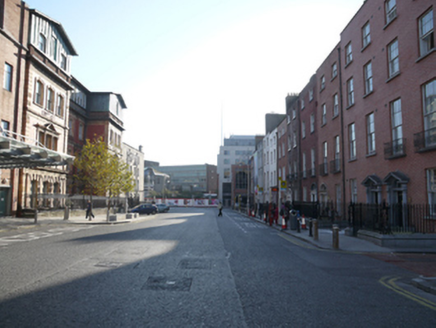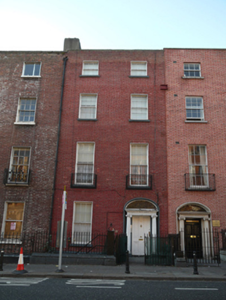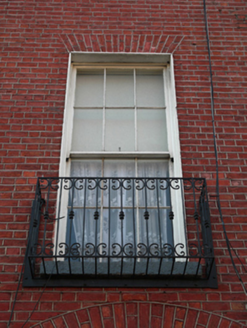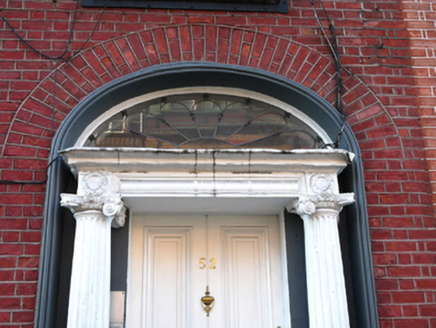Survey Data
Reg No
50010630
Rating
Regional
Categories of Special Interest
Architectural, Artistic
Original Use
House
In Use As
Apartment/flat (converted)
Date
1760 - 1775
Coordinates
315659, 234931
Date Recorded
06/11/2011
Date Updated
--/--/--
Description
Terraced two-bay four-storey house over exposed basement, built in period 1763-73. Now in multiple occupancy. Double-pile slate roof with pair of hipped sections set perpendicular to rear. Shared rendered chimneystacks with clay pots to south party wall. Roof hidden behind parapet wall with granite coping and shared cast-iron hopper and downpipe breaking through to south. Tinted red brick walls laid in Flemish bond set on chamfered granite plinth course over rendered basement walls. Gauged brick flat-arched window openings with patent rendered reveals, granite sills and replacement timber sliding sash windows, six-over-six pane to lower floors, three-over-three pane to top floor, and eight-over-eight pane to basement. Replacement iron balconettes to first floor windows. Gauged brick three-centred arched door opening with moulded masonry surround and painted stone Ionic doorcase. Nineteenth-century flat-panelled timber door flanked by fluted Ionic columns on plinth bases supporting panelled lintel cornice with wreaths and leaded petal fanlight. Door opens onto concrete platform flush to street, bridging basement area. Platform and basement area enclosed by replacement steel railings on moulded granite plinth wall and pair of steel gates enclosing platform to street.
Appraisal
Originally leased by Dr. Bartholomew Mosse in 1748, these plots were laid out by Luke Gardiner in 1753, and this house was built by Andrew Reid, along with Nos. 53, 56 and 57. The building was considerably altered during the nineteenth century and owes much of its present appearance to that period. The house retains a good nineteenth-century doorcase and is generally well presented, thus forming part of the varied architectural detailing that gives Parnell Square some of its inherent character and appeal.







